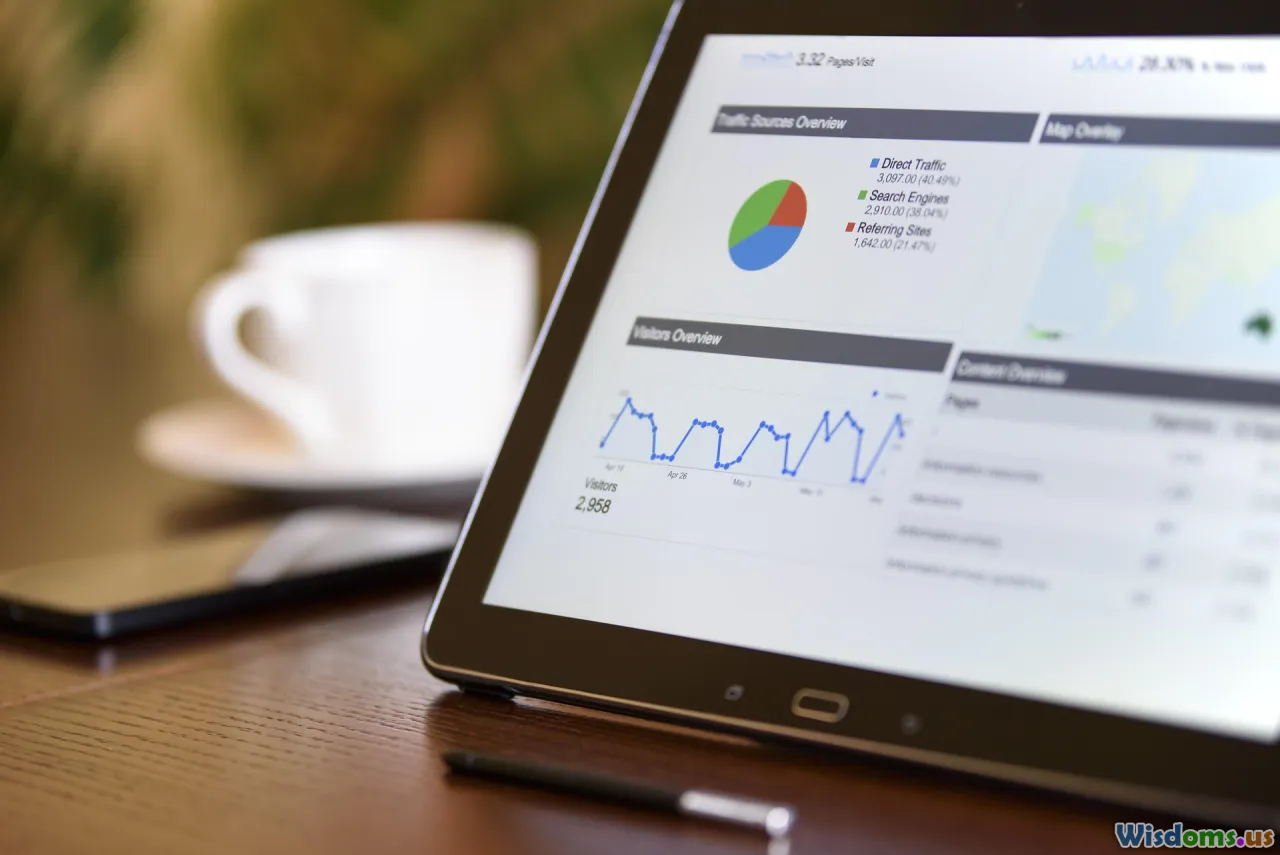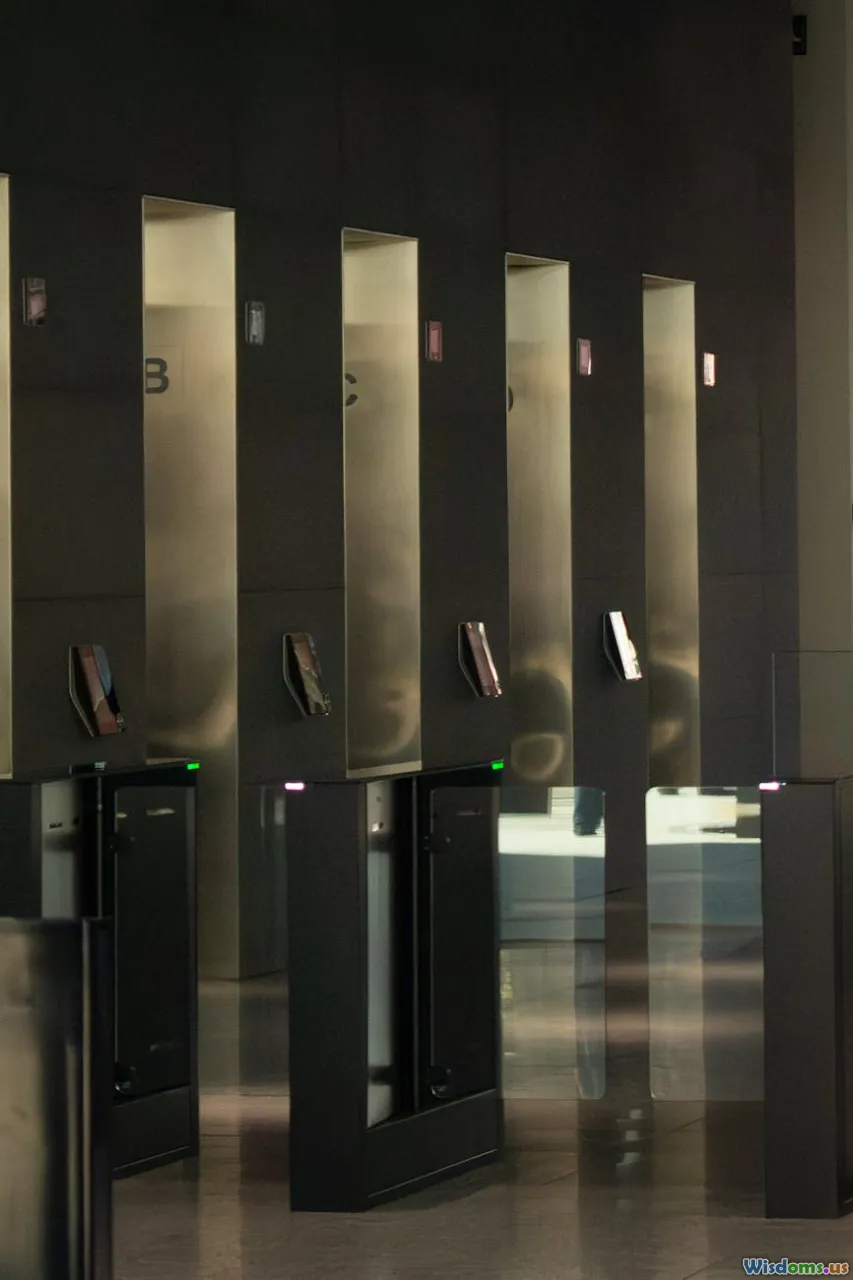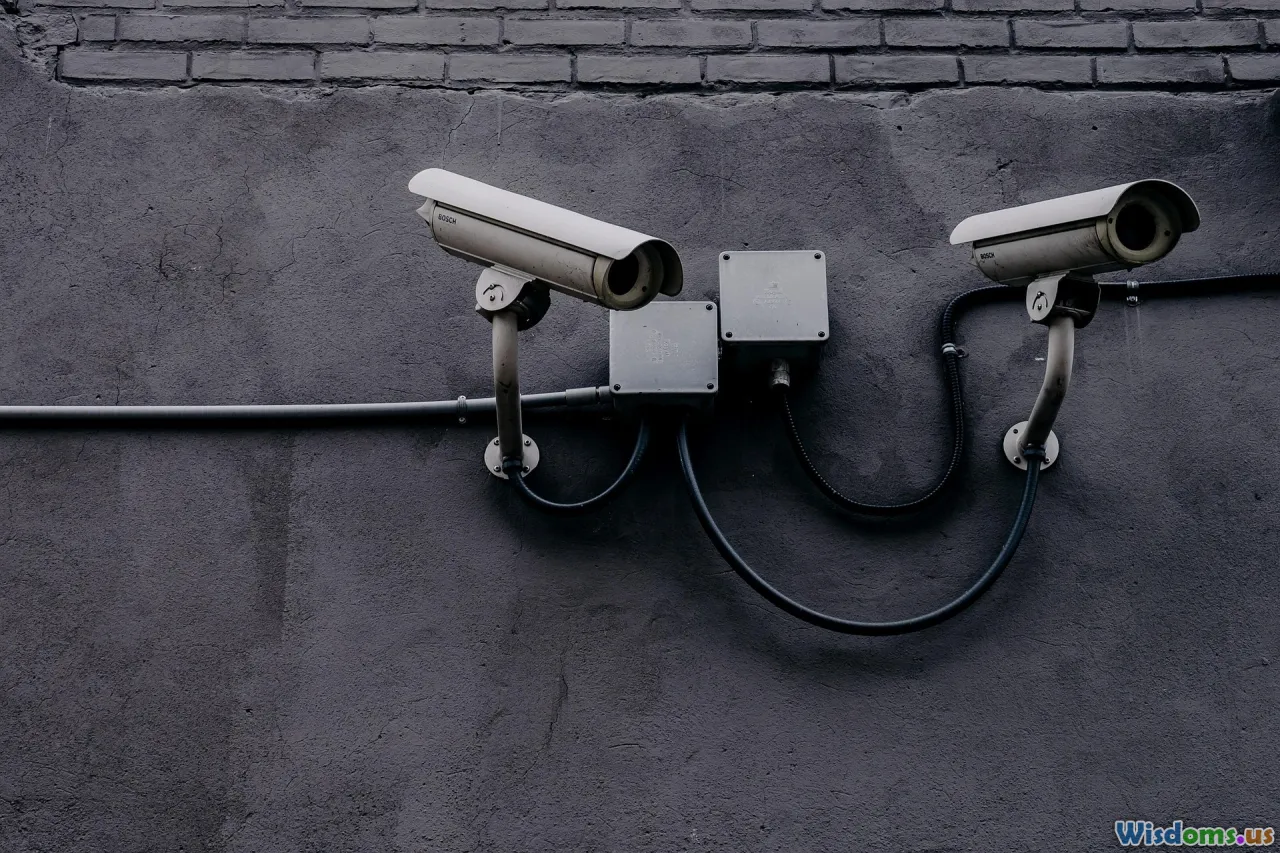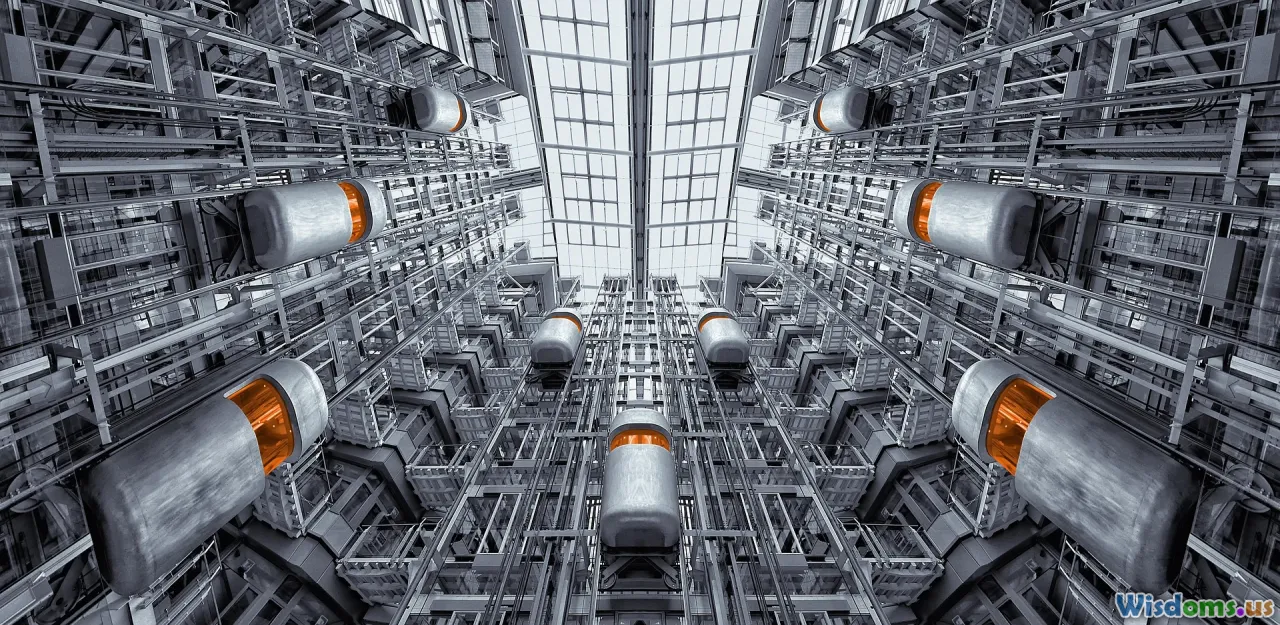
How Technology Is Transforming Prison Management Today
14 min read Explore how cutting-edge technology is revolutionizing modern prison management for enhanced safety, efficiency, and rehabilitation. (0 Reviews)
How Technology Is Transforming Prison Management Today
The traditional image of prisons conjures up high walls, iron bars, and guards walking concrete corridors. Yet, behind those walls, a quiet revolution is underway. Around the world, technology is becoming the linchpin for more effective, humane, and efficient prison management. From advanced surveillance to digital rehabilitation programs, the correctional system is adapting to the 21st century in remarkable ways. In this article, we take an in-depth look at the technologies reshaping prisons and what that means for security, staff, and inmates.
Smart Surveillance and Security Systems

Historically, monitoring and securing prison environments depended on physical presence, routine patrols, and basic CCTV. Today, integrated smart surveillance systems leverage artificial intelligence (AI) and machine learning to elevate security operations to unprecedented levels.
AI-Powered Monitoring
Modern prisons are equipped with high-definition cameras that do much more than record video. Through AI algorithms, these cameras can detect unusual or aggressive behaviors—such as crowd buildup, fights, or loitering in restricted areas. For example, the Los Angeles County correctional system has implemented predictive algorithms that alert staff to escalating conflicts based on subtle behavioral cues picked up by these surveillance networks.
Sensors and Drones
Sensors placed in walls and floors can detect unauthorized movements or attempts at tunneling. Drone surveillance provides extra oversight, especially in large correctional complexes. In some Scandinavian countries, drone technology is increasingly used to monitor prison perimeters and prevent contraband drops, a growing concern around the globe.
Benefits and Considerations
- Reduced Blind Spots: Automated tracking of unusual activity minimizes human error.
- Rapid Response: Alerts enable guards to respond more quickly to emergencies, often preventing escalation.
- Privacy Balancing Act: While surveillance enhances security, it raises questions about inmates' privacy and human rights, prompting prisons to establish strict policies on data use and retention.
Digital Recordkeeping and Data Integration

Paper archives once dominated correctional facilities, creating inefficiencies and risk of loss. The shift to digital recordkeeping transformed everything from medical care to parole administration.
Centralized Data Management
Most modern prisons now use integrated offender management systems (OMS) that consolidate:
- Arrest and incarceration records
- Health and medication logs
- Court appearances
- Disciplinary actions
- Visitation history
For example, the UK’s National Offender Management System (NOMS) collates offender data from dozens of sources, enabling seamless coordination between prison, parole, and probation services. Staff can instantly access everything necessary to make informed decisions.
Real-Time Access
Correctional officers in the Netherlands use secure tablets to review inmate files, submit incident reports, and dispense medication. This approach reduces errors and enhances staff efficiency, freeing time for inmate engagement and rehabilitation work.
Analytical Insights
Data analytics tools can reveal patterns—such as spikes in violence, absenteeism among staff, or areas prone to contraband movement—and drive evidence-based reforms.
E-Rehabilitation: Digital Pathways to Better Outcomes

Rehabilitation is a pillar of correctional philosophy, but outdated models often fell short. E-rehabilitation platforms are changing the game by providing personalized, data-driven pathways out of the cycle of re-offending.
Online Education Programs
Access to education is directly linked to lower recidivism. Correctional systems in Singapore and Canada have implemented secure learning platforms where inmates can
- Complete high school equivalency programs
- Study vocational skills (like coding or digital design)
- Explore self-paced university courses Inmates in the Idaho Department of Correction, for example, use controlled “intranet portals” to access thousands of accredited coursework options without needing unfiltered internet connections.
Telemedicine and Teletherapy
Healthcare delivery inside prisons is notoriously complex:
- Access to specialists is limited
- Transportation is costly and poses security risks Telemedicine addresses these gaps. Several US states, including Texas and Illinois, have deployed secure video consultation booths for both physical and psychiatric care. Early findings show not only cost savings but also improved mental health outcomes, which directly correlate to prison safety and community reentry success.
Digital Libraries and Remote Mentoring
With eBooks, prison libraries are no longer constrained by physical space. In Australia’s New South Wales system, inmates interact with community volunteers through secure video chat, building soft skills and prosocial networks long before they return home.
Biometrics and Enhanced Identity Verification

Managing hundreds or thousands of inmates presents enormous logistical challenges—especially at intake, visitations, and work assignments.
Biometric Tracking For Security
Fingerprint and facial recognition systems effortlessly verify identities, reducing “man-in-the-middle” errors:
- Entry/Exit: Biometric checkpoints log every movement within and outside the prison.
- Contraband Prevention: Staff access to restricted zones is logged, enhancing accountability. India’s Telangana prisons use iris scanning for both inmates and visitors, virtually eliminating impersonation and unauthorized access.
Accurate Time Tracking
Secure biometric devices streamline roll calls and work-release programs—a solution particularly valuable in facilities with work-to-earn or education-based incentives.
Smart Infrastructure – Automation for Safety and Efficiency

Smart building technologies are not just for high-tech offices. Prisons increasingly rely on automation to sharpen operational efficiency while reducing costs.
Automated Doors and Lighting
Automated controls allow staff to lock and unlock doors remotely, isolating incidents without risking direct confrontation. Lighting systems that automatically shut off or dim during evening hours help conserve energy, yielding significant utility savings. For instance, California’s San Quentin State Prison reported an 18% reduction in annual energy costs after implementing smart lighting and building controls.
HVAC and Environmental Monitoring
Sensors can regulate temperature, CO2, and humidity—improving living conditions and reducing maintenance demands. Modern HVAC systems can even localize zones of outbreak in the case of airborne infections, enhancing health outcomes for both staff and inmates.
Smart Water Management
Automated water shut-off mechanisms prevent intentional flooding or damage—a chronic issue in many older facilities—ensuring safer and cleaner living environments.
Communication and Connectivity: Staying in Touch in the Digital Age

Isolation from loved ones is one of the most damaging aspects of incarceration. Digital communication platforms are bridging this gap while maintaining security and transparency.
Secure Video Calls and Messaging
From the US to Norway, prisons worldwide now provide secure, monitored video calls and digital messaging portals. For instance, the Federal Bureau of Prisons (BOP) offers inmates the "TRULINCS" platform: a secure email system separate from the public internet. Video visitation became even more vital during pandemic lockdowns, minimizing what would otherwise have been traumatic disruptions in family contact.
Commissary and Financial Services
Digital banking has reached correctional environments. Inmates can manage accounts, send requests, and place commissary orders electronically, reducing paperwork, the risk of theft, and administrative delays.
Cautions and Controls
While digital access opens new opportunities, it is tightly regulated—computing devices are often limited to pre-approved functions and monitored 24/7 for security.
Predictive Analytics and Proactive Management

Perhaps the most transformative but least visible front is the use of predictive analytics to anticipate and prevent crises.
Anticipating Conflict and Ensuring Safety
Algorithms comb through thousands of data points:
- Past violent incidents
- Contraband reports
- Changes in search frequencies By analyzing patterns, wardens can deploy resources more efficiently, preemptively focus on at-risk populations, and schedule staff for maximum coverage during expected spikes—the predictive policing model, adapted for prison management.
For example, Israel Prison Service uses data analytics to forecast days or periods with a high probability of incident, aligning extra support or therapeutic interventions for that window.
Resourcing and Rehabilitation Optimization
Directing limited space, staff, or educational resources to where they will have the most positive impact is now data-driven. German penitentiaries have piloted tools that help counselors allocate resources precisely according to risk and potential, increasing the effectiveness of rehabilitation interventions.
Challenges and Ethical Considerations

While technology’s promise is vast, it brings significant challenges.
Surveillance vs. Rights
Advanced surveillance may enhance safety, but persistent monitoring risks dehumanizing inmates and infringing on privacy.
Digital Divide
Not all inmates have equal digital literacy or access. Prisons must tread thoughtfully, ensuring e-rehabilitation complements rather than replaces face-to-face engagement for those who need it most.
Cost and Implementation
Introducing cutting-edge systems involves large upfront investments and the need for continuous staff training. Rural or underfunded facilities may lag behind, exacerbating inequality in prison experience and outcomes.
Cybersecurity
Every new networked system introduces vulnerabilities. High-profile ransomware and hacking incidents have shown that correctional facilities are increasingly in need of robust IT security protocols.
Looking Toward a Transformed Correctional System

Technology alone cannot humanize the prison experience—but it certainly provides the tools for safer, smarter, and more rehabilitative correctional systems. As innovations accelerate, prison authorities must combine high-tech tools with evidence-based practices and an unwavering respect for human dignity.
Around the globe, lessons are emerging. Structured policy frameworks, transparent oversight, and cross-border collaborations will help ensure these tools fulfill their potential—balancing firm control with genuine avenues for rehabilitation, rather than surveillance for its own sake.
At its best, prison technology is not just about gates and guards. It’s about giving everyone—a correctional officer, a policymaker, and, most importantly, an inmate—the best possible odds for a safer today and a brighter tomorrow.
Rate the Post
User Reviews
Popular Posts




















